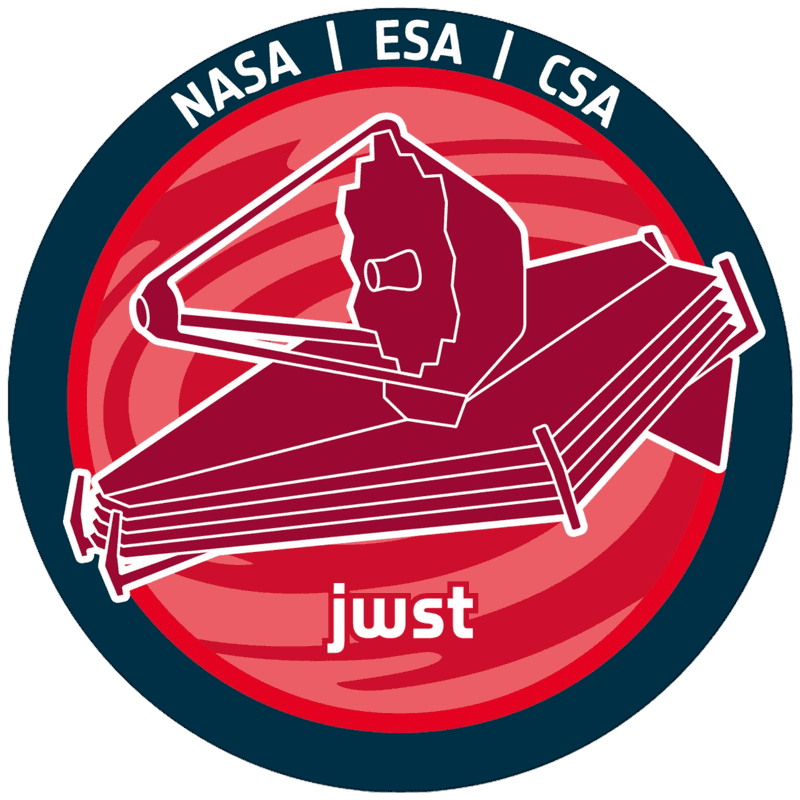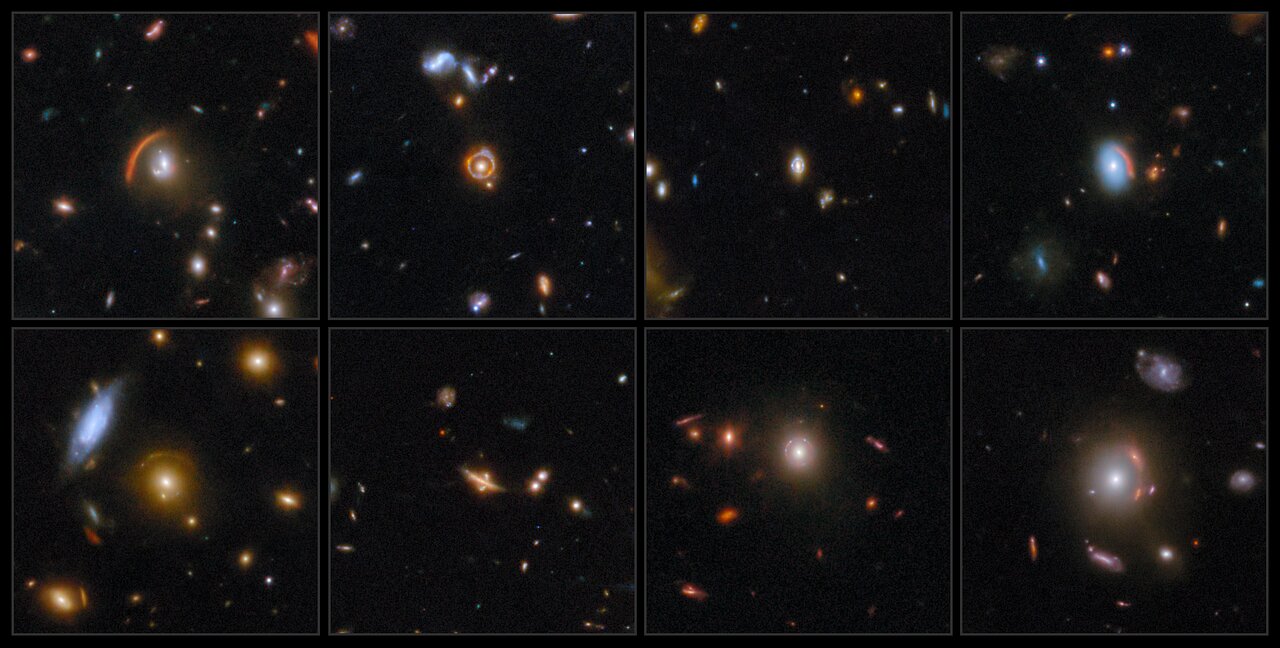Webb brings cosmic lenses into focus
This ESA/Webb Picture of the Month shows eight stunning examples of gravitational lensing. Gravitational lensing, which was first predicted by Einstein, occurs because massive objects like galaxies and clusters of galaxies dramatically warp the fabric of spacetime. When a massive foreground object lines up just so with a background galaxy, the light from the background galaxy bends as it navigates the warped spacetime on its way to our telescopes.
Depending on how perfect the alignment is, the light from the background galaxy can be bent into an arc, a circle (a phenomenon called an ‘Einstein ring’) or even split into multiple images.
Arcs and circles are prevalent in these gravitationally lensed galaxies, which were identified in data from COSMOS-Web, a 255-hour Treasury programme (#1727). COSMOS-Web aims to understand the formation of the most massive galaxies in the Universe, identify galaxies that were present when the first stars and galaxies reionised the Universe’s hydrogen gas, and study the relationship between the mass of a galaxy’s stars and the mass of its galactic halo across cosmic time.
Using these data, researchers carried out the COSMOS-Web Lens Survey, or COWLS, to search for gravitational lenses. The researchers inspected more than 42 000 galaxies by eye and picked out more than 400 promising lensing candidates. This Picture of the Month feature presents a collage of eight of the most spectacular lenses identified by the research team.
This collection of gravitational lenses spans an incredible range of cosmic history. The foreground galaxies give us a glimpse of galactic life when the Universe was 2.7 to 8.9 billion years old. The background galaxies, whose shapes appear visibly distorted, stretch back even further, with one source nicknamed ‘the COSMOS-Web Ring’ (top row, left of centre) letting us peek all the way back to when the Universe was barely more than a billion years old. Several rarities appear in this collection, including an unusual case in which the galaxy acting as the gravitational lens is a flattened disc galaxy rather than an elliptical galaxy (bottom row, second from left).
These images demonstrate Webb’s ability to uncover and reveal never-before-seen details in gravitationally lensed galaxies. Some of the lensed galaxies were previously discovered with the NASA/ESA Hubble Space Telescope and are now seen by Webb in an entirely new light. Others, including those that are especially red due to either dust or distance, were first spotted by Webb. These discoveries open a unique window into the early days of the Universe and enable the study of exquisite details within distant galaxies like individual star clusters and supernovae.
Individual images of the lenses are also available. From left-to-right then top-to-bottom: COSJ100013+023424, COSJ100024+015334, COSJ100018+022138, COSJ100024+021749, COSJ095914+021219, COSJ100025+015245, COSJ095921+020638, and COSJ095593+023319.
[Image Description: A collage of eight Webb images of gravitational lensing are shown. Each of the images show various distorted galaxies in the centre of each frame, including arcs and circular shapes.]
Links
- Pan video of COSMOS-Web gravitational lenses
- Science paper I (J. Nightingale et al.)
- Science paper II (G. Mahler et al.)
- Science paper III (N. B. Hogg et al.)
ESA/Webb, NASA & CSA, G. Gozaliasl, A. Koekemoer, M. Franco
About the Image
| Id: | potm2509a | |
|---|---|---|
| Type: | Collage | |
| Release date: | 30 September 2025, 10:00 | |
| Size: | 2768 x 1401 px | |


